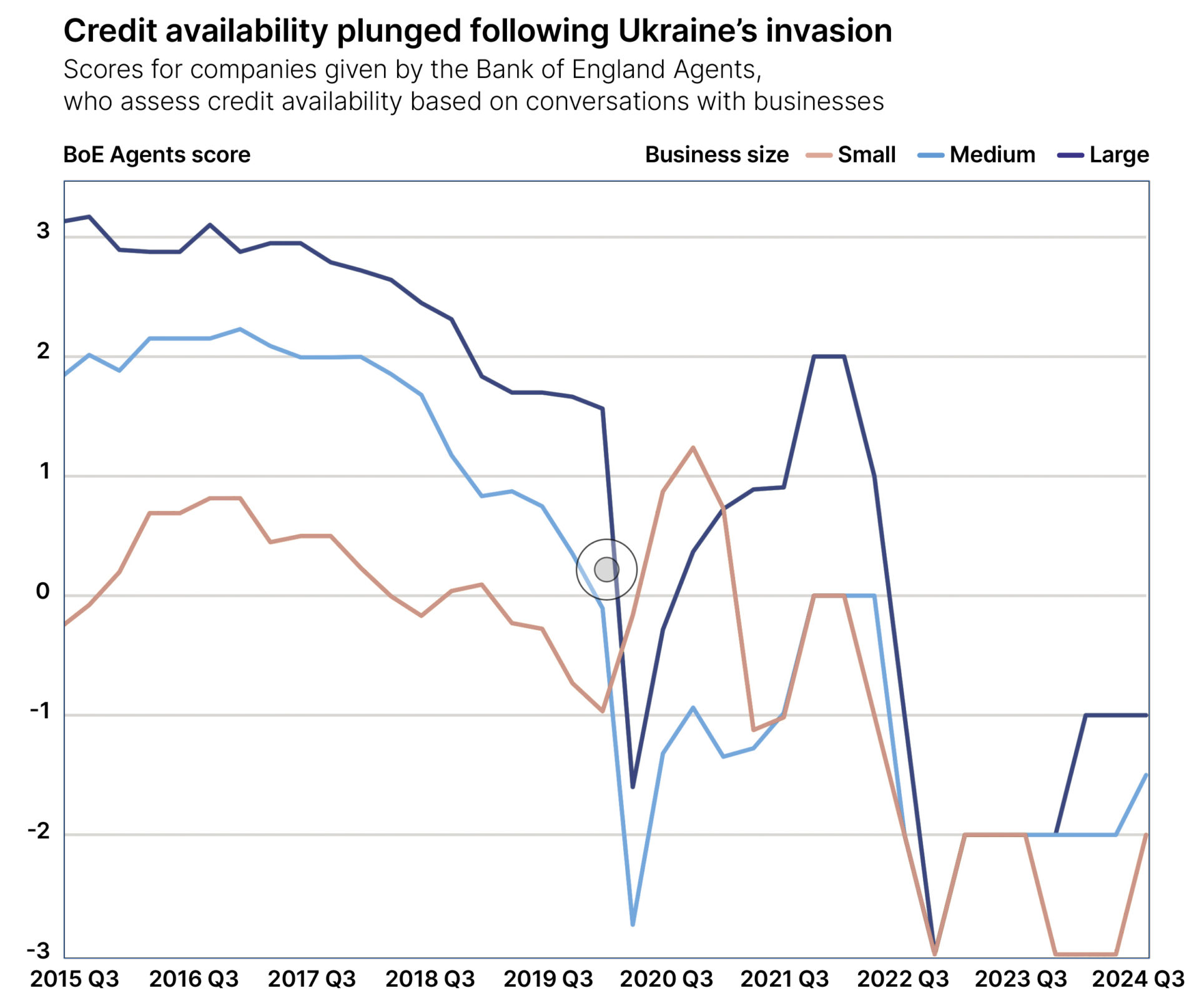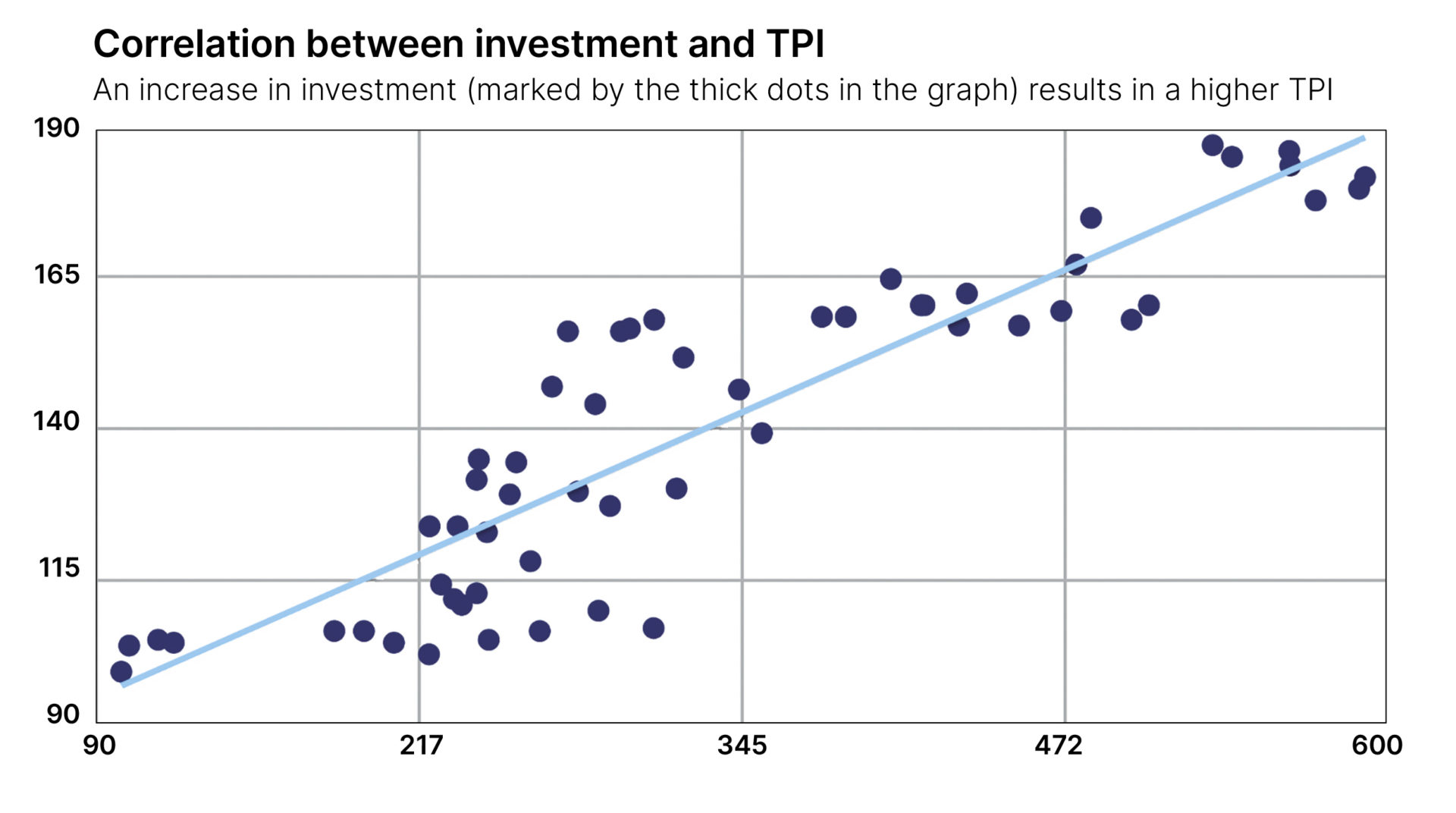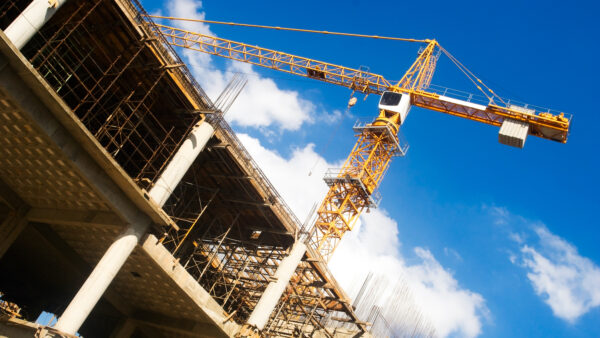
Observing financial risk indicators can help construction prepare for uncertainty in tender price inflation, writes Barrett Harris.
How do you measure the impact of the unpredictable? This is the question every business is faced with when trying to price risk into their financial models. For construction, it’s a key driver for inflation in tender pricing as contractors seek to protect themselves from market uncertainty.
One of the main ways financial risk manifests itself for construction is in credit availability. The Covid pandemic, followed by Russia’s invasion of Ukraine, has significantly affected borrowing costs and the lending criteria of banks. These events have led to cashflow issues and insolvencies, threatening ongoing projects and reducing the likelihood of firms taking on new work.

The Bank of England Agents’ scores (top graph) assess credit availability and are based on conversations with businesses. The score for each variable ranges from +5 to -5 points. Negative scores indicate tightening credit, while positive scores suggest improvement. Following the Covid pandemic, these scores reached lows of -2.8 and -1.6 points for medium and large companies, and the outbreak of the Ukraine conflict pushed them lower still.
Despite a modest recovery since, scores remain negative, indicating a continued tightening of credit. As of Q3 2024, small, medium and large businesses scored -2.0, -1.5 and -1.0 respectively.
Understanding funding constraints and their impact can provide valuable insight into future fluctuations in tender price inflation.
Investment relationship
The availability of credit significantly influences investment levels in the industry, as limited access to funds constrains the ability to commit to new projects. This was evident during the covid pandemic, when credit availability scores for medium and large companies fell to historic lows.
Construction investment saw a quarter-on-quarter decline of 17.8% in Q2 2020. This downturn led to two consecutive quarters of contraction in the Building Cost Information Service (BCIS) All-in Tender Price Index (TPI).

Investment and TPI have a positive relationship. High investment levels often signal that firms perceive the environment as stable and are more optimistic about investing capital, which in turn drives up TPI. Conversely, tender prices decline when investment levels drop.
Capital expenditure and tender price inflation are highly and positively correlated. The bottom graph shows how an increase in the index of investment (base Q1 2010=100) explains more than 80% (R²=0.812) of the variance in the BCIS tender prices index (base Q1 2010=100).
By closely monitoring financial risk indicators and enhancing financial resilience through robust cashflow management and securing diverse funding sources, industry stakeholders can better anticipate and manage fluctuations in tender price inflation.
Stable pricing might seem appealing, but not if it is born out of low investment to counteract low availability of credit.
Barrett Harris is an economist at Turner & Townsend.











